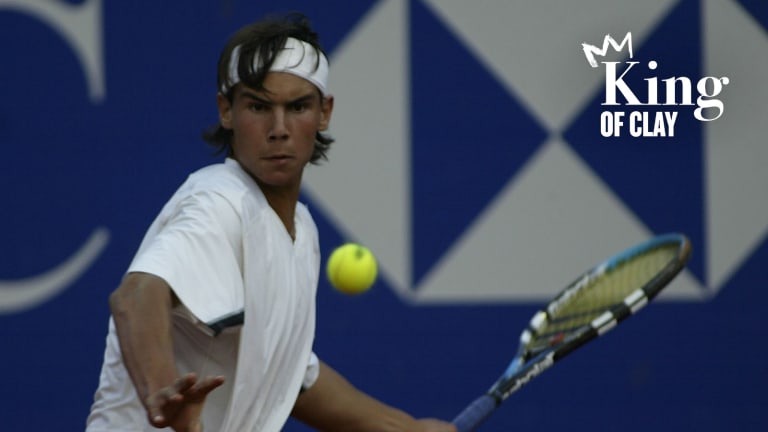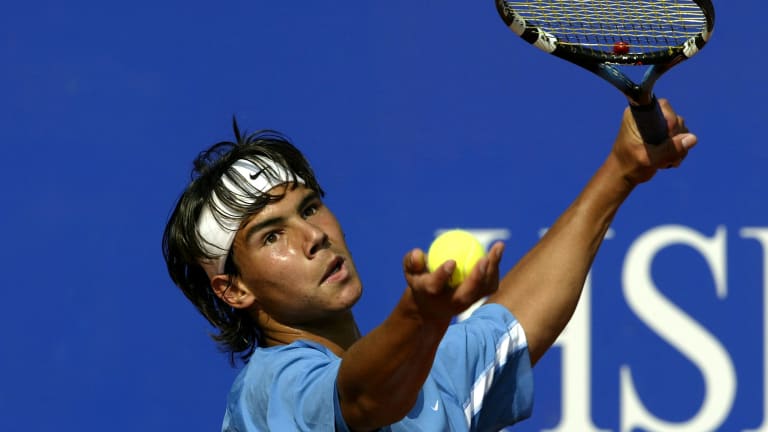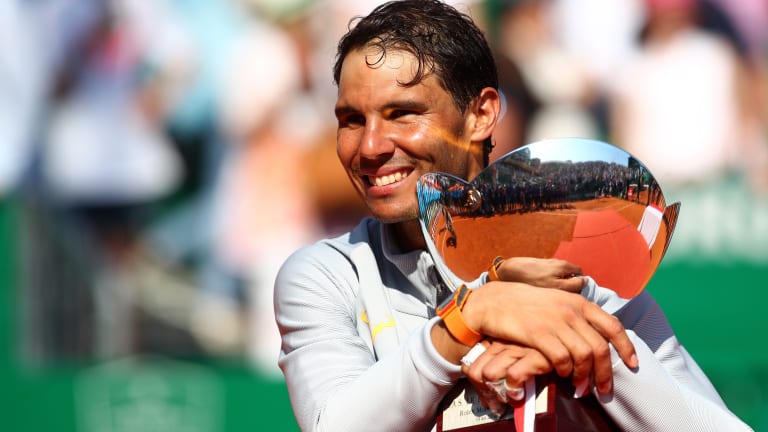10 Matches That Made Rafa the King of Clay
The 10 Matches That Made Rafael Nadal the King of Clay: Our countdown begins
By Apr 16, 202310 Matches That Made Rafa the King of Clay
No. 10, 2022: Nadal wins his 14th Roland Garros—and finally feels the crowd love in Paris
By Apr 27, 202310 Matches That Made Rafa the King of Clay
No. 9, 2013: Nadal and Djokovic led each other to a summit in staggering French Open semifinal
By Apr 26, 202310 Matches That Made Rafa the King of Clay
No. 8, 2012: Nadal wins record seventh Roland Garros by ending seven-match losing streak to Djokovic
By Apr 25, 202310 Matches That Made Rafa the King of Clay
No. 7, 2011: Nadal ends a difficult match with del Potro, as well as a trying season, with Davis Cup glory
By Apr 24, 202310 Matches That Made Rafa the King of Clay
No. 6, 2009: A "death in the afternoon" for Nadal, who edges Djokovic three-set Madrid marathon
By Apr 21, 202310 Matches That Made Rafa the King of Clay
No. 5, 2006: Nadal refuses to lose in five-hour, five-setter against Federer in Rome
By Apr 21, 202310 Matches That Made Rafa the King of Clay
No. 4, 2005: Rafael Nadal and Roger Federer bring their burgeoning rivalry to clay
By Apr 19, 202310 Matches That Made Rafa the King of Clay
No. 3, 2005: Nadal takes the next step, and puts on his big-boy piratas, in Coria epic in Rome
By Apr 18, 202310 Matches That Made Rafa the King of Clay
No. 2, 2004: Nadal heeds Moya's words, tops Roddick in raucous Davis Cup final
By Apr 17, 2023The 10 Matches That Made Rafael Nadal the King of Clay: Our countdown begins
First up—an energetic 16-year-old unveils his signature relentless style to the tennis world in Monte Carlo, against the reigning Roland Garros champion.
Published Apr 16, 2023
Advertising
Advertising

King in training.
© Getty Images
Advertising

A day earlier, the southpaw won the first Masters-level match of his career, against Karol Kucera.
© Getty Images
Advertising
Advertising

Nadal announced himself to the tennis world in Monte Carlo, and he would go on to win the tournament an astounding 11 times.
© 2018 Getty Images